สวัสดีครับเพื่อน ๆ ชาว Eduzones วันนี้ผมมีความรู้รอบตัวเล็ก ๆ น้อย ๆ มาฝากเพื่อน ๆ กันครับ เป็นความรู้ที่บางคนอาจจะไม่เคยรู้มาก่อน บางข้อเป็นความรู้ที่แทบจะไม่น่าเกิดขึ้น บางข้อก็เป็นความรู้ชวนหัวเราะ เดี๋ยวเราลองไปดูความรู้ทั้ง 99 ข้อนี้กันเลยดีกว่าครับ
1. ยุงบินด้วยความเร็ว 5 ไมล์ต่อชั่วโมง
2. ผีเสื้อบินด้วยความเร็ว 20 ไมล์ต่อชั่วโมง
3. เส้นผมคนรับน้ำหนักได้ 3 กิโลกรัม
4. เสียงกรนที่ดังที่สุดดังถึง 87.5 เดซิเบล
5. พอล แมคคาร์ที เป็นเจ้าของลิขสิทธิ์เพลง Happy Birthday ถ้าจะนำมาออกรายการต้องซื้อลิขสิทธิ์ก่อน
6. เหรียญทองโอลิมปิกต้องมีแร่เงินผสมอยู่ 92.5 %
7. หอเอนเมืองปิซาเอนไปทางใต้
8. กษัตริย์หลุยส์ที่ 14 อาบน้ำทั้งหมด 3 ครั้งในชีวิต
9. ฮิตเลอร์แสกผมข้างซ้าย
10. ผู้หญิงที่เกาะฮาวายที่ทัดดอกไม้ที่หูข้างซ้าย แสดงว่ามีเจ้าของแล้ว
11. เราไม่สามารถฆ่าตัวตายด้วยการกลั้นหายใจได้
12. ผู้หญิง 3.9 % ไม่ชอบใส่กางเกงใน
13. ฮิปโปผายลมทางปาก
14. ประเทศซาอุดิอาระเบียไม่มีแม่น้ำ
15. กังหันทั้งโลกหมุนทวนเข็มนาฬิกา ยกเว้นที่ไอร์แลนด์
16. เด็กนักเรียนอายุ 15 ปีขึ้นไปในบังคลาเทศจะถูกจับเข้าคุกถ้า "โกงข้อสอบ"
17. ปลาที่อาศัยในน้ำลึกเกิน 800 เมตร จะไม่มีตา
18. ผมคนเราจะร่วงประมาณ 200 เส้นต่อวัน
19. ตัว "โอ" เป็นสระที่เก่าแก่ที่สุดในอังกฤษ
20. คนพูดประมาณ 120 คำต่อนาที
21. ฝ่ามือและฝ่าเท้าของคนเราไม่สามารถไหม้ได้
22. เม่นชอบช่วยตัวเอง
23. ถ้าปลาไหลไฟฟ้าอยู่ในน้ำเค็ม จะถูกช็อตตาย
24. ขั้นบันไดในไทยจะเป็นเลขคี่
25. เจ้าฟ้าชายชาลส์ชอบสะสมฝาโถส้วม
26. คนมีโอกาสตายจากผึ้งต่อยมากกว่างูกัด
27. ประเทศวาติกันมีประชากรประมาณ 1000 คน
28. เมื่อคุณจาม หัวใจคุณจะหยุดเต้นเสี้ยววินาที
29. เป็นไปไม่ได้ ถ้าคุณจะจามโดยไม่หลับตา
30. เดิมโคคาโคล่าเป็นสีเขียว
31. ชื่อที่โหลที่สุดในโลกคือ MOHAMMED
32. กล้ามเนื้อที่แข็งแรงที่สุดในร่างกายคือ ลิ้น
33. แต่ละโพหลังไพ่ แสดงถึงกษัตริย์ที่ยิ่งใหญ่จากประวัติศาสตร์ - โพดำกษัตริย์เดวิด - ดอกจิก อเล็กซานเดอร์มหาราช - โพหัวใจ ชาร์ล เลอ มาญ - ข้าวหลามตัด จูเลียส ซีซาร์
34. อนุสาวรีย์ของใครสักคนที่อยู่บนหลังม้าและม้ายกสองขาขึ้นบนอากาศแปลว่าคนนั้นตายในสงคราม
35. ถ้าม้ายกขาข้างเดียวแปลว่า เขาบาดเจ็บในสงครามและตายจากการบาดเจ็บ
36. ถ้าทั้งสี่ขาของม้าอยู่บนพื้น แสดงว่าตายโดยธรรมชาติ
37. ใน 4,000 ปีที่ผ่านมา ไม่มีสัตว์ชนิดใหม่ๆที่ถูกทำให้เชื่อง
38. เชคสเปียร์ เป็นคนคิดค้นคำว่า ASSASSINATION (การลอบฆ่า) และ BUMP ( ชน กระทบ)
39. หัวใจมนุษย์สร้างความดันเพียงพอที่จะปั๊มเลือดออกจากร่างกายไป 30 ฟุต
40. หนูสามารถสืบพันธุ์ได้เร็วมาก ใน 18 เดือน หนูสองตัวจะสามารถมีทายาทมากกว่าล้านตัว
41. การใส่หูฟังแค่ชั่วโมงเดียว ทำให้แบคทีเรียในหูเพิ่มขึ้น 700 เท่าตัว
42. ลิปสติกส่วนใหญ่มีส่วนประกอบของเกล็ดปลา
43. ลายนิ้วมือกับลายลิ้นทุกคนต่างกัน
44. นิตยสาร TIME ได้ยกย่องให้คอมพิวเตอร์เป็นบุคคลแห่งปีในปี ค.ศ.1982
45. สถิติจูบนานที่สุดในโลกเป็นของหลุยซา แอลเมโดวาร์ วัย 19 ปีกับแฟนหนุ่ม ริชแลงเลย์ วัย 22 ปีพวกเขาทำสถิติไว้ที่ 30.59.27 ชม.
46. ตอนที่ F4 ไปเปิดคอนเสิร์ตที่อินโดนีเซียทำให้เด็กนักเรียนเกือบ 100 คน ต้องเรียนซ้ำชั้น เพราะไม่ได้ไปลงทะเบียนเรียนเทอม 2
47. บริษัทผู้ผลิตยาสีฟันดาร์ลี่เป็นเจ้าของเดียวกันกับที่ผลิตยาสีฟันคอลเกต
48. โดนัลด์ ดักส์ ถูกแบนในประเทศฟินแลนด์ เพราะมันไม่ได้สวมกางเกงใน
49. ภาพยนต์เรื่อง NOTHING HILL จ่ายค่าตัวจูเลีย โรเบิร์ต 15 ล้านเหรียญ ( 660 ล้านบาท ) ในขณะที่พระเอกอย่างฮิว แกรนจ์รับค่าตัวเพียง 1 ล้านเหรียญ ( 45 ล้านบาท)
50. หนังอะนิเมชันเรื่อง SOUTHPARK ได้รับการบันทึกลงในหนังสือกินเนสส์บุ๊คว่าเป็นหนังอะนิเมชั่นเรื่องยาวที่หยาบคายที่สุดในโลก สถิติบันทึกไว้ว่า มีการใช้คำหยาบ 399 คำ พฤติกรรมรุนแรง 221 ครั้ง และแสดงท่าทางหยาบคาย 128 ครั้ง
51. ขนมทอดกรอบตรา ปูไทย ระบุว่าไม่มีส่วนผสมของเนื้อปู
52. ในน้ำทะเล 100 ตัน จะมีทองคำอยู่ประมาณ 4 กรัม
53. จำนวนแถวของข้าวโพดในแต่ละฝักจะเป็นเลขคู่
54. จิงโจ้เป็นสัตว์เลี้ยงลูกด้วยนมชนิดเดียวที่เดินถอยหลังไม่ได้
57. ยุงชอบเลือดเด็กมากกว่าเลือดผู้ใหญ่
58. แมงมุมทอดรสชาติเหมือนถั่ว
59. ฟันของแมลงสาบอยู่ในท้อง
60. เม่นทุกตัวลอยน้ำได้
61. หมู มีโอกาสเป็นโรคพิษสุราเรื้อรัง
62. นอกจากมนุษย์แล้ว หมีขั้วโลกและจิงโจ้ต่างก็จูบเป็น ส่วนลิงชิมแปนซีนั้นจูบแบบ "เฟรนช์คิส" ได้ด้วย
63. คนถนัดขวามีอายุเฉลี่ยยืนยาวกว่าคนถนัดซ้ายถึง 9 ปี
64. HIPPOPOTOMONSTRSESQUIPPEDALIOPHOBIA คือ ชื่ออาการของคนที่หวาดกลัวคำอ่านยาวๆ
65. ผู้ที่เกิดเดือนมกราคม - มีนาคม มีแนวโน้มเป็นโรคจิตและโรคคลั่งมากกว่าเดือนอื่นๆ
66. แก้วไม่ได้เป็นของเเข็งเเต่เปนของเหลว
67. สมองคนเราหนักประมาณ 3% ของน้ำหนักของร่างกาย แต่ใช้เลือดไปเลี้ยงถึง 15% ของเลือดทั้งหมด
68. เลือดของกุ้งมังกรเป็นสีน้ำเงิน
69. อูฐสามารถหมุนหัว 180 องศา
70. รู้หรือเปล่าว่าเว็บ GOOGLE ไม่ได้มีประโยชน์แค่หาข้อมูล แต่เป็นเครื่องคิดเลขได้ (ลองใส่ 5+2 หรือเลขอะไรก็ได้ในช่อง แล้วกด SEARCH )
65. ผู้ที่เกิดเดือนมกราคม - มีนาคม มีแนวโน้มเป็นโรคจิตและโรคคลั่งมากกว่าเดือนอื่นๆ
66. แก้วไม่ได้เป็นของเเข็งเเต่เปนของเหลว
67. สมองคนเราหนักประมาณ 3% ของน้ำหนักของร่างกาย แต่ใช้เลือดไปเลี้ยงถึง 15% ของเลือดทั้งหมด
68. เลือดของกุ้งมังกรเป็นสีน้ำเงิน
69. อูฐสามารถหมุนหัว 180 องศา
70. รู้หรือเปล่าว่าเว็บ GOOGLE ไม่ได้มีประโยชน์แค่หาข้อมูล แต่เป็นเครื่องคิดเลขได้ (ลองใส่ 5+2 หรือเลขอะไรก็ได้ในช่อง แล้วกด SEARCH )
71. ผู้ชายมีหนวดราว 30,000 เส้นทั้งชีวิต
72. คนทั้งโลกหนักรวมกัน 371,017,590,800 กิโลกรัม
73. ใน 1 ปีคนเรานำอาหารเครื่องดื่มเข้าร่างกายเฉลี่ย 900 กิโลกรัม
74. คนปกติมีคิ้ว 550 เส้น
75. นักวิทยาศาสตร์คำนวณเวลา 9.15 น. ของวันอังคารเป็นเวลาที่ดีที่สุดของการส่ง E-Mail แล้วปลายทางจะเปิดอ่านและตอบกลับมาเร็วที่สุด
76. 65% ของคนที่เป็นโรคหมกมุ่นกับตัวเอง มักถนัดซ้ายและมักพบว่าคนถนัดซ้ายอยู่ในกลุ่มของศิลปินชื่อดังระดับโลก
77. การแลบลิ้นให้น้ำลายยืดลงพื้น 3 หยด จะแก้เผ็ดได้
78. ดูดนมยางของเด็กทารกตอนนอน จะแก้อาการนอนกรนได้
79. การสูดกลิ่นตัวผู้ชาย ทำให้หายเครียดได้
80. แอปเปิ้ลผลิตกระแสไฟฟ้าได้
81. ปัสสาวะมนุษย์ ใช้ทำยาสีฟันในสมัยโบราณ
82. เพชรแท้จะไม่ติดสีหมึก
83. การทะเลาะกันทำให้แผลหายช้า
84. แสงแดด อ่อนๆ ช่วยป้องกันโรคซึมเศร้าได้
85. การฟังเพลงช่วยบรรเทาอาการปวดข้อได้
86. ผีเสื้อรับรสด้วยเท้าของมัน
87. เสียงร้องของเป็ดจะไม่เป็นเสียงสะท้อน (ECHO)
88. ในเวลา 10 นาที พายุเฮอริเคนมีพลังมากกว่าพลังงานนิวเคลียร์
88. ในเวลา 10 นาที พายุเฮอริเคนมีพลังมากกว่าพลังงานนิวเคลียร์
89. ช้างเป็นสัตว์ชนิดเดียวในโลกที่ไม่สามารถกระโดดได้
90. ผู้หญิงกระพริบตามากกว่าผู้ชายถึง 2 เท่า
91. ห้องสมุดที่มหาวิทยาลัยอินเดียนน่าจมลงในดิน 1
นิ้วทุกปี เพราะวิศวกรลืมคำนวณถึงน้ำหนักหนังสือ
นิ้วทุกปี เพราะวิศวกรลืมคำนวณถึงน้ำหนักหนังสือ
92. หอยทากสามารถนอนหลับได้ 3 ปี !!
93. ตาของเราจะขนาดเท่าเดิมตลอดตั้งแต่เกิด
แต่จมูกและหูจะไม่หยุดโต
แต่จมูกและหูจะไม่หยุดโต
94. เก้าอี้ไฟฟ้า(สำหรับประหารชีวิตนักโทษ) ออกแบบโดยหมอฟัน
95. หมีขั้วโลกทุกตัวจะถนัดมือซ้าย
96. สมัยอียิปต์โบราณ พระจะถอนขนทุกเส้นในตัว
รวมถึงคิ้วและขนตา
96. สมัยอียิปต์โบราณ พระจะถอนขนทุกเส้นในตัว
รวมถึงคิ้วและขนตา
97. ตาของนกกระจอกเทศใหญ่กว่าหัวสมองของมันซะอีก
98. คำว่า TYPEWRITER
เป็นศัพท์ที่ยาวที่สุดที่คุณจะนึกออกในแป้นพิมพ์แถวเดียวกัน
เป็นศัพท์ที่ยาวที่สุดที่คุณจะนึกออกในแป้นพิมพ์แถวเดียวกัน
99. ปลานอนหลับโดยที่ไม่ต้องหลับตาเพราะมีสมอง 2 ส่วน ทำงานสลับกันไป คล้ายๆกับโหมด STANDBY เปิดระบบไว้เพียงการลอยตัวและป้องกันภัย ส่วนระบบอื่นๆจะพักผ่อน
เป็นอย่างไรกันบ้างครับเพื่อน ๆ สำหรับความรู้รอบตัวทั้ง 99 ข้อ ทำเอาบางคนอึ้งเลยใช่ไหมล่ะ ขนาดบางข้อผมยังไม่รู้มาก่อนเลยมามันเป็นจริง เพิ่มรอยยักในสมองให้ผมเยอะเลยแหละครับ ยังไงก็ฝากเพื่อนชาว Eduzones ลองเอาคำถามนี้ไปถามเล่นกับเพื่อน ๆ คนอื่น ๆ ดูก็ได้นะครับ
ขอบคุณข้อมูล : http://flash-mini.com
ขอบคุณข้อมูล : http://flash-mini.com













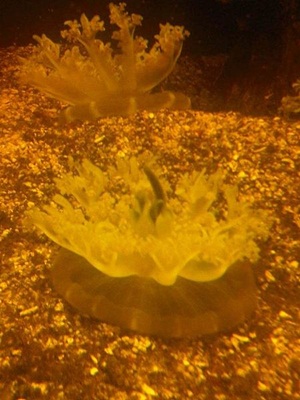
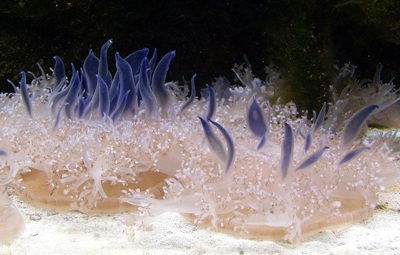
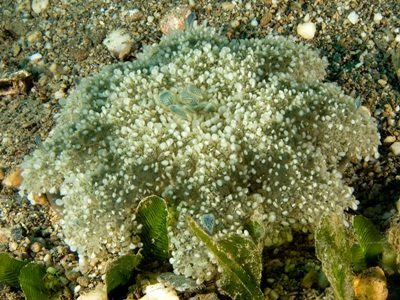
 Getty Images
Getty Images STF/AFP/Getty ImagesItalian cyclist Gino Bartali won two Tours, but was more of a hero off the bike (see: No. 69 of our list).
STF/AFP/Getty ImagesItalian cyclist Gino Bartali won two Tours, but was more of a hero off the bike (see: No. 69 of our list). AFP/Getty ImagesGreg LeMond, left, beat Bernard Hinault in the 1986 Tour. Hinault won the race the previous year.
AFP/Getty ImagesGreg LeMond, left, beat Bernard Hinault in the 1986 Tour. Hinault won the race the previous year.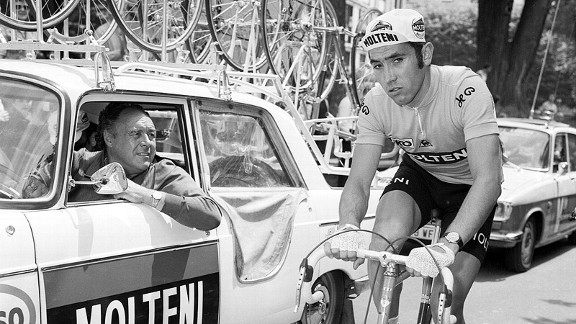 AFP/AFP/Getty ImagesEddy Merckx, a.k.a. 'The Cannibal', won five Tour de France races (1969-1972, 1974).
AFP/AFP/Getty ImagesEddy Merckx, a.k.a. 'The Cannibal', won five Tour de France races (1969-1972, 1974).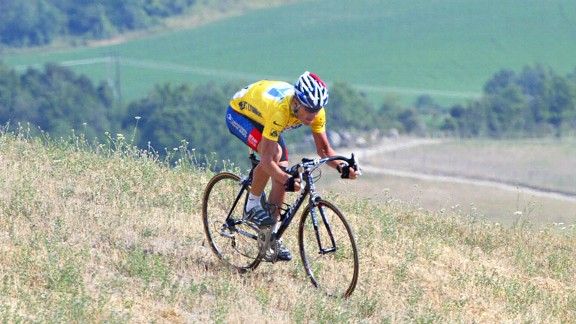 Joel Saget/Getty ImagesLance Armstrong's forced detour into a field in 2003 was one of the more memorable Tour moments.
Joel Saget/Getty ImagesLance Armstrong's forced detour into a field in 2003 was one of the more memorable Tour moments.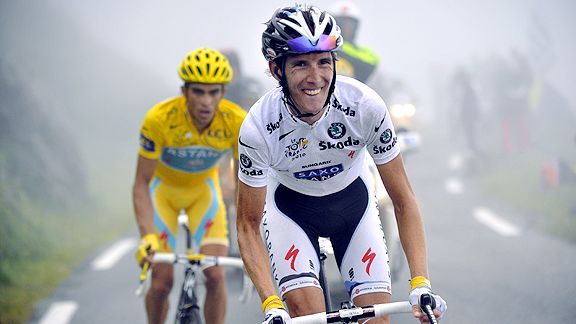 Lionel Bonaventure/AFP/Getty ImagesAndy Schleck, left, tried his best, but Alberto Contador won their classic mountain duel during the 2010 Tour.
Lionel Bonaventure/AFP/Getty ImagesAndy Schleck, left, tried his best, but Alberto Contador won their classic mountain duel during the 2010 Tour.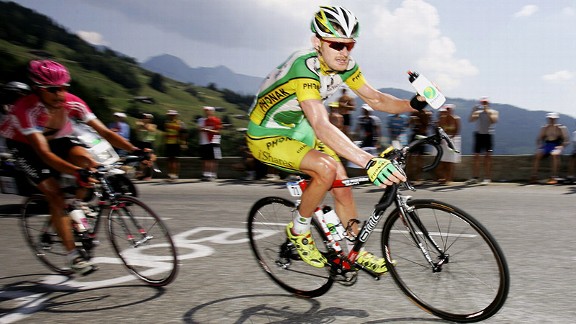 Friedemann Vogel/Getty ImagesFloyd Landis' incredible comeback during Stage 17 of the 2006 Tour turned out to be not so credible.
Friedemann Vogel/Getty ImagesFloyd Landis' incredible comeback during Stage 17 of the 2006 Tour turned out to be not so credible.